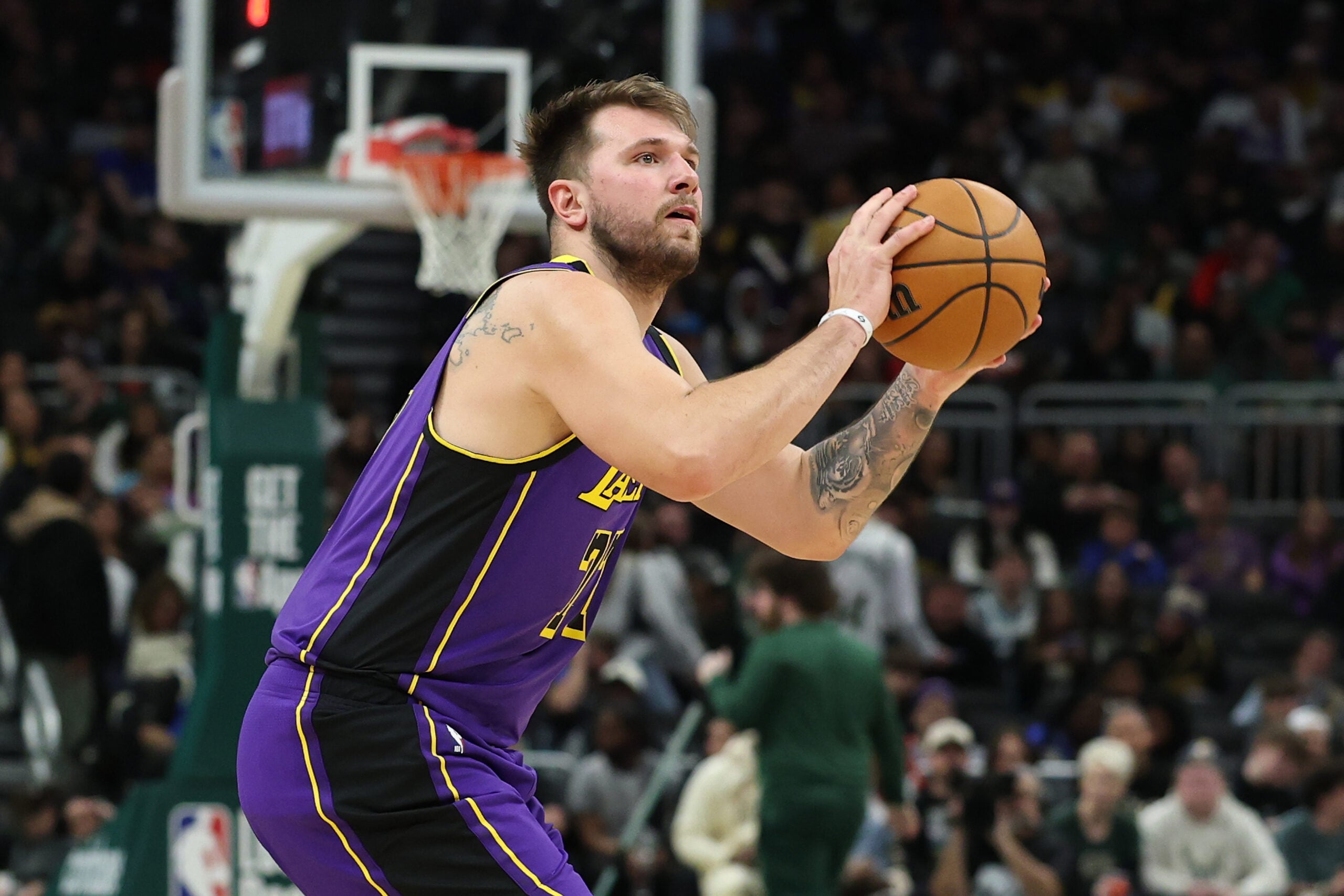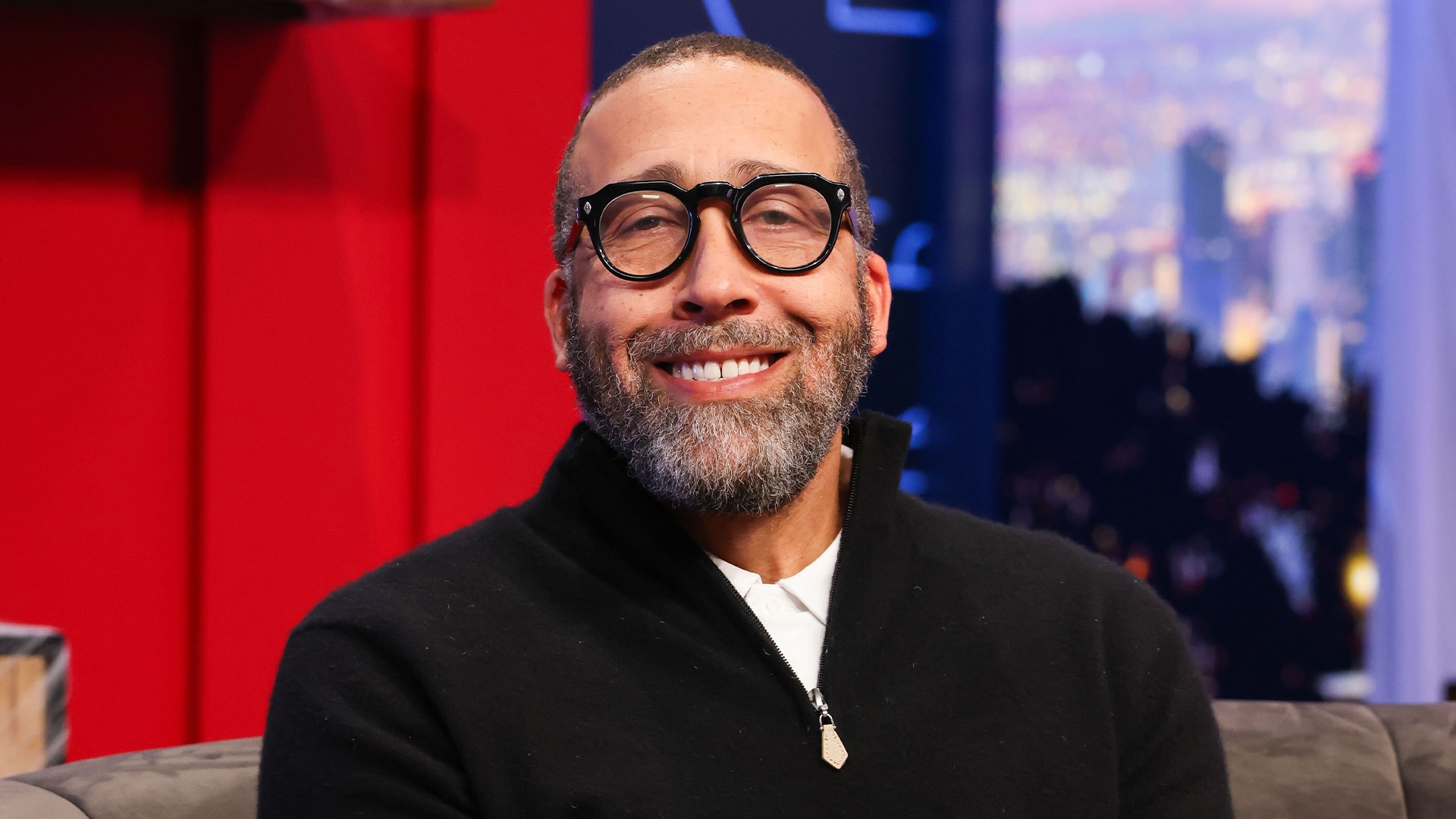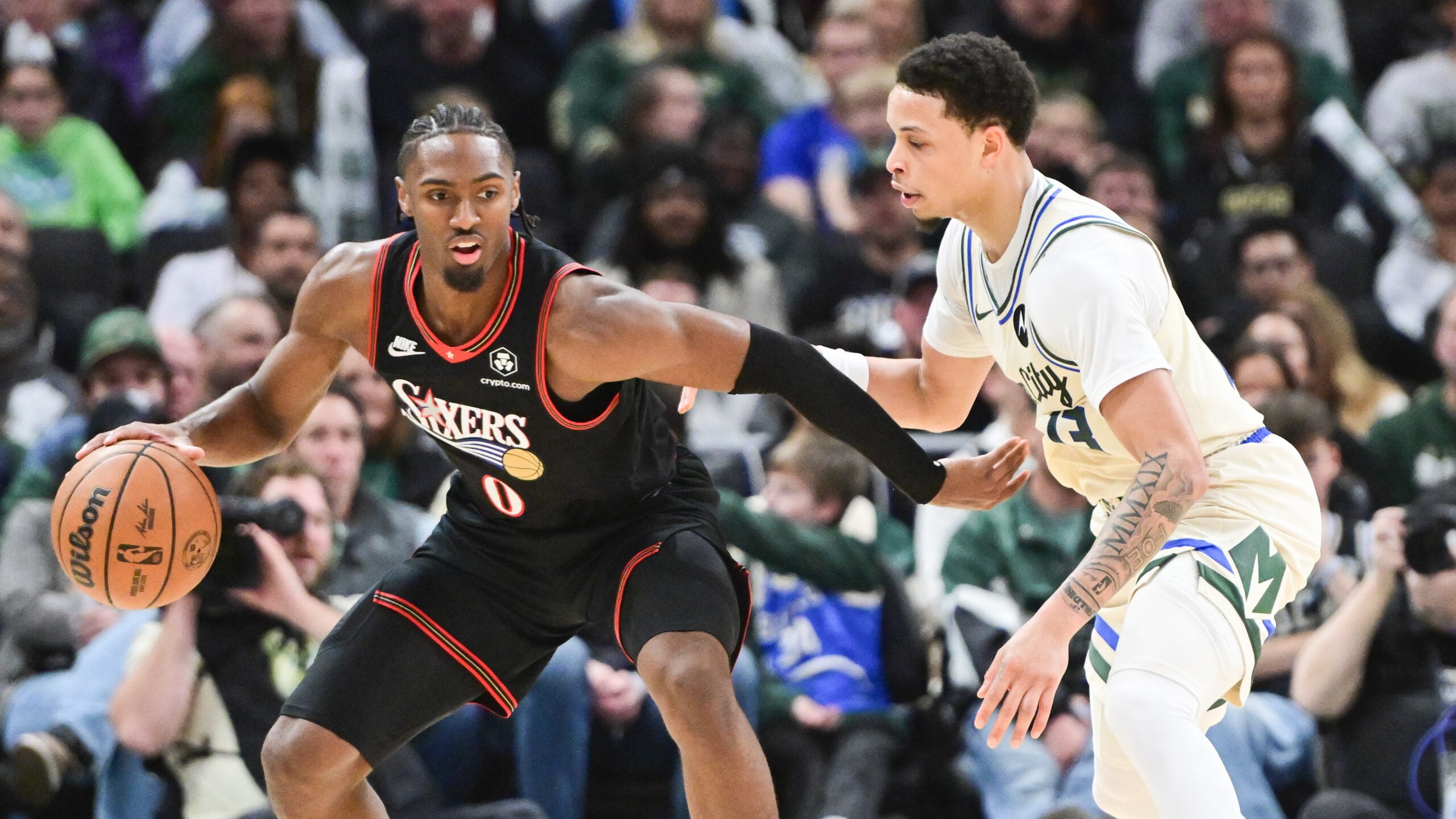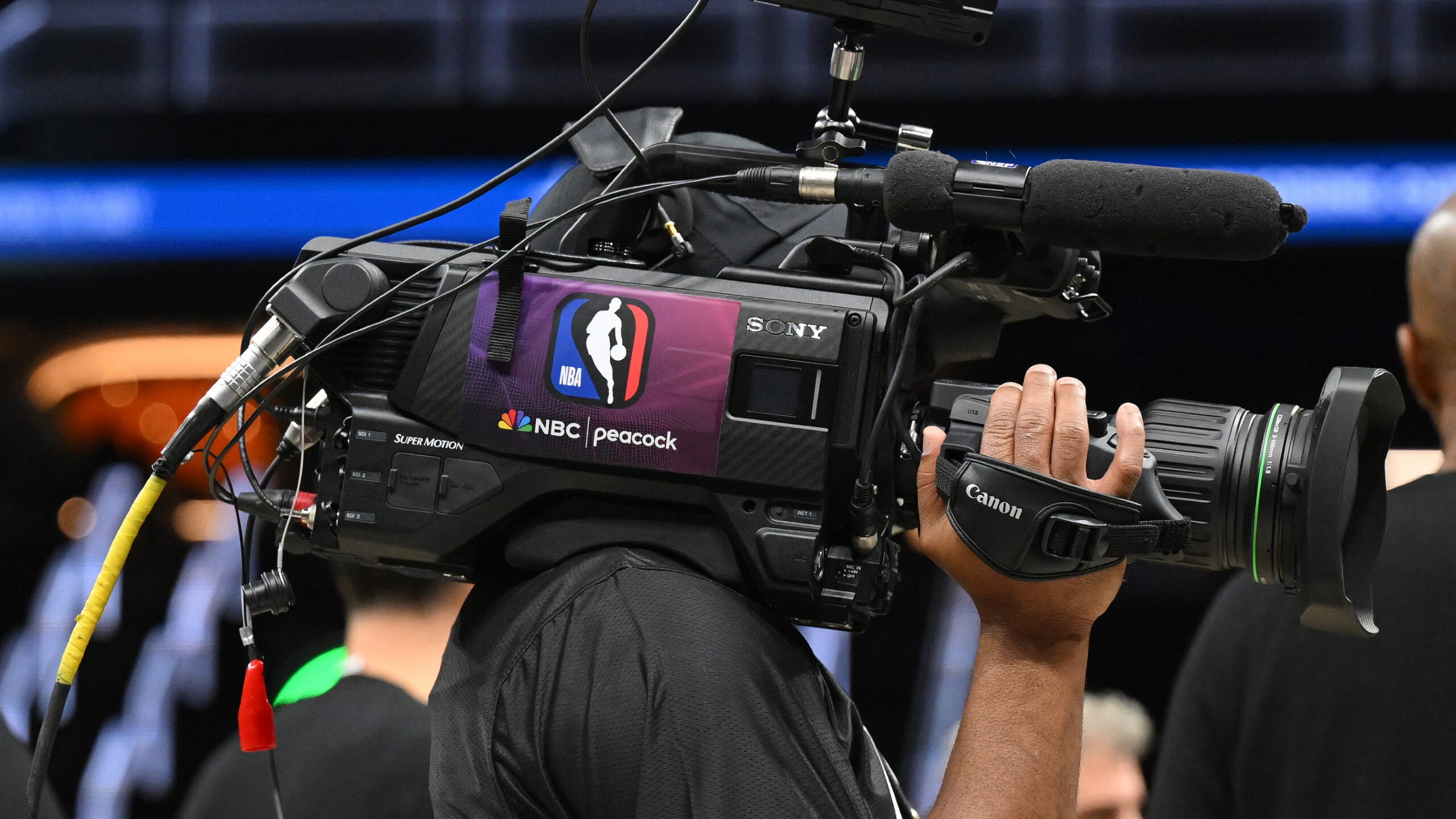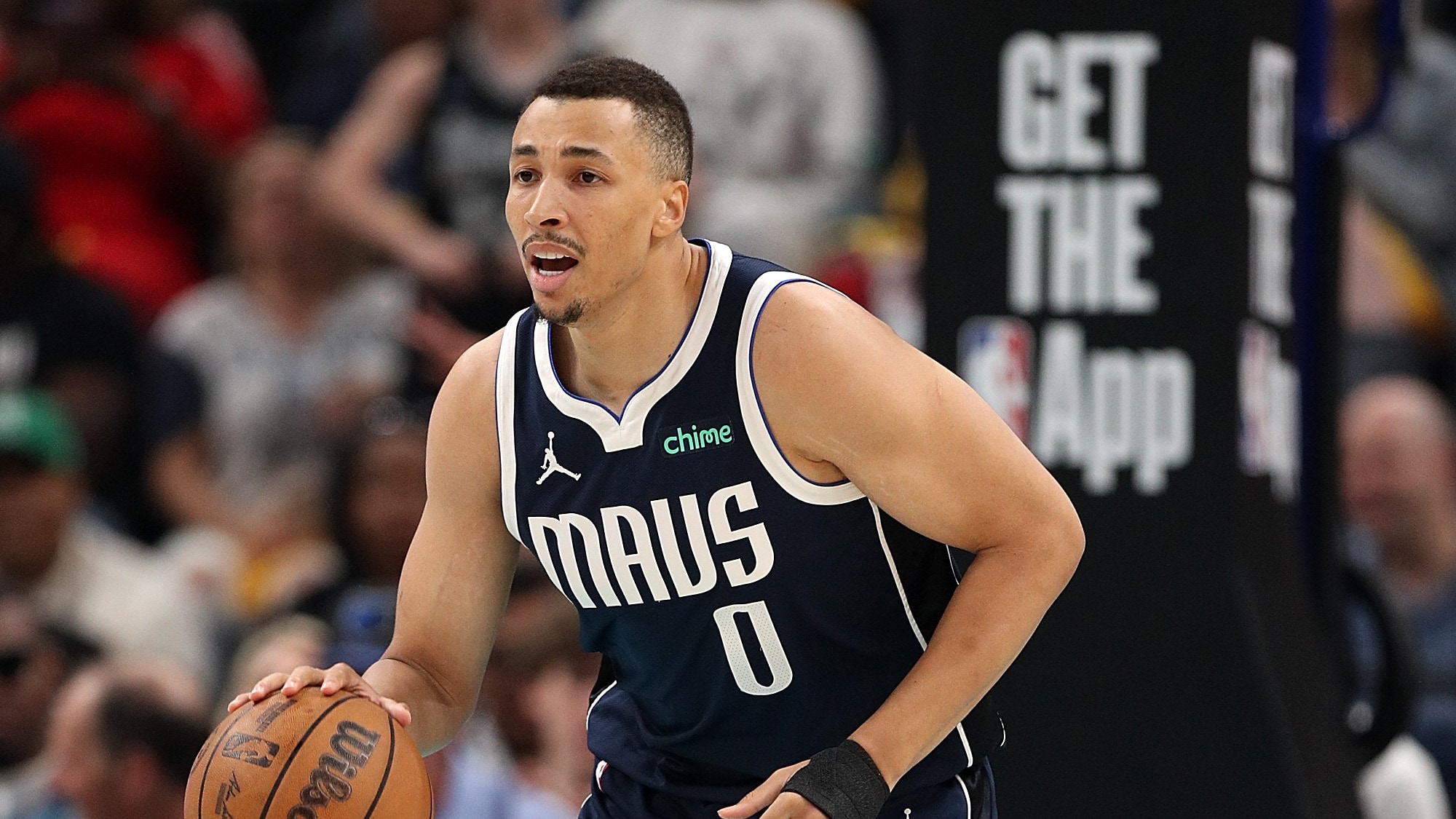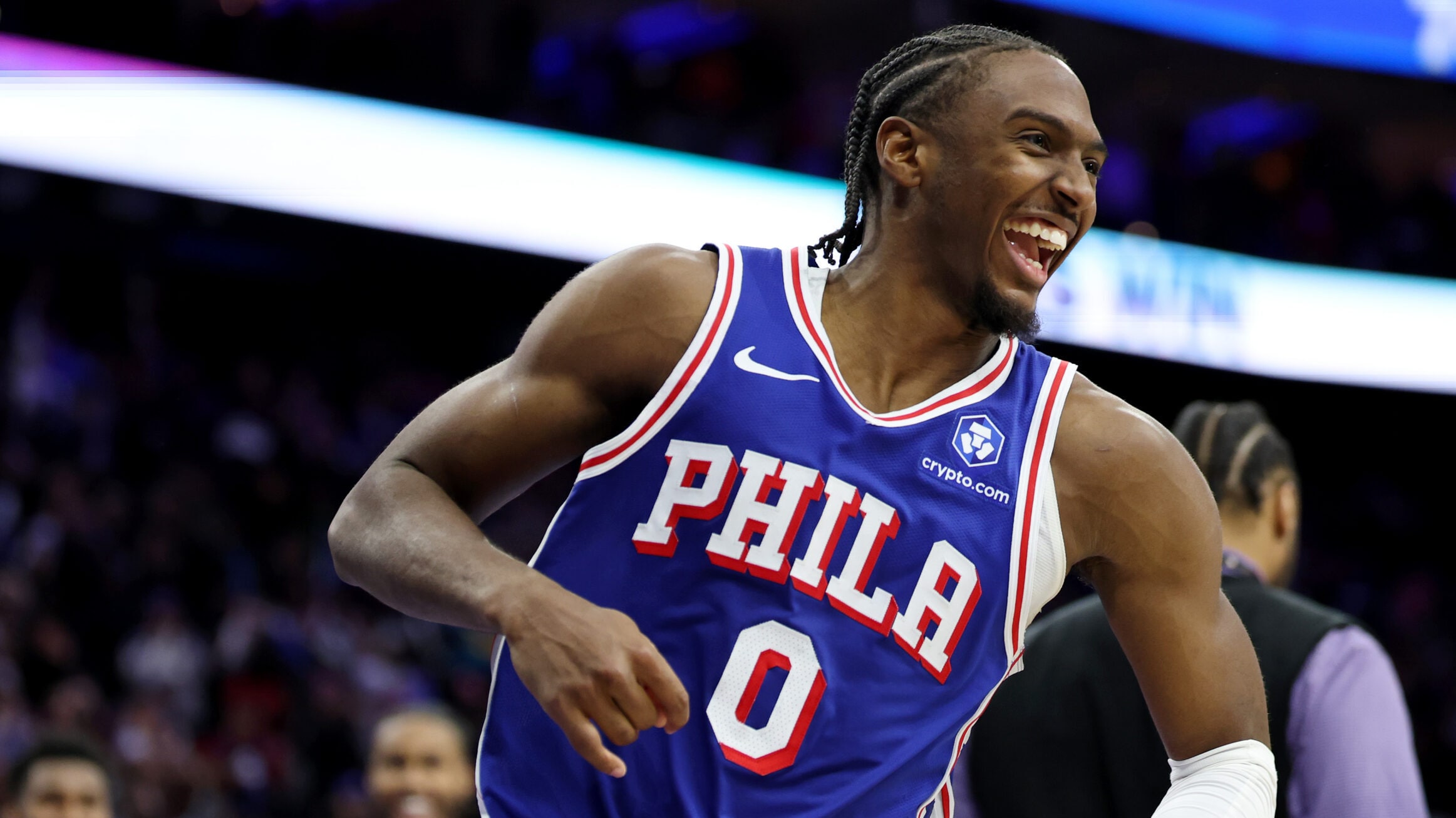In an attempt to add unpredictability into the Lakers' offense, coach JJ Redick is prompting other players to create.
The Los Angeles Lakers have never been below .500. But after 40 games, they were 22-18 with the point differential (minus-2.6 per game, 12th in the West) of a team that was 16-24. They were in sixth place, but clearly not a contender.
Since then, the Lakers are 20-7, having outscored their opponents by 8.3 points per 100 possessions. Only three teams have a better record and only two have been better statistically over the last two months.
Along the way, of course, the Lakers acquired Luka Dončić, giving them a higher ceiling (especially offensively) than they had previously.
Here are some notes, numbers and film on how the Lakers are set up for their final 15 games and the playoffs …
1. Defensive improvement inside and out
Improvement since those first 40 games has come on both ends of the floor, but there’s been *a much bigger leap on defense, where the Lakers rank second over the last two months.
* The defensive improvement is especially more significant given that league-wide efficiency has been higher in February and March (114.7 points scored per 100 possessions) than it was through January (112.9).
Lakers record and efficiency, 2024-25
| Timeframe | W | L | PCT | OffRtg | Rank | DefRtg | Rank | NetRtg | Rank |
|---|---|---|---|---|---|---|---|---|---|
| Through Jan. 19 | 22 | 18 | 0.550 | 112.8 | 13 | 115.7 | 24 | -2.9 | 21 |
| Since | 20 | 7 | 0.741 | 117.0 | 7 | 108.7 | 2 | +8.3 | 3 |
| Diff. | 0.191 | +4.2 | -7.0 | +11.2 |
OffRtg = Points scored per 100 possessions
DefRtg = Points allowed per 100 possessions
NetRtg = Point differential per 100 possessions
The Lakers have seen a small jump in defensive rebounding percentage over the last 27 games, but the improvement is almost entirely about how effectively their opponents have shot. They rank first (by a healthy margin) in opponent effective field goal percentage (50.1%) since Jan. 20, up from 25th (55.5%) before then.
It starts with fewer shots and worse shooting in the paint …
- Their opponents have taken 46% of their shots in the paint over the last 27 games, down from 50% prior.
- Their opponents have shot 54.5% in the paint, down from 58% prior.
The Lakers have allowed more shots from the outside over the last two months, but …
- Their opponents have shot 32.5% from 3-point range (second lowest) since Jan. 20, down from 36.6% (23rd) before then.
The data doesn’t point to any structural changes in the Lakers’ defense …
- They haven’t seen a reduction in the percentage of their opponents’ possessions that have been in transition, per Synergy tracking.
- They haven’t made significant changes in defending pick-and-rolls, per Second Spectrum tracking. (They’ve been a switch-heavy team all season.)
- The percentage of their opponents’ 3-point attempts that have been wide open and the percentage that have come from the corners have both risen over the last two months.
That last bullet indicates that the Lakers have been a little lucky since their opponents are shooting just 32.5% from beyond the arc in the last 27 games. But they have seen a reduction in opponent drives, indicating they’ve been better at the point of attack.
2. Working harder (and having the personnel) to get stops
The Lakers’ last win before LeBron James’ injury came on March 6, when they held the Knicks’ top-five offense to just 49 points on 54 possessions after halftime. Gabe Vincent did a terrific job navigating screens set for Jalen Brunson, but when those screens were set by the guy Dončić was guarding, Dončić would usually switch.
That was the case on a possession late in the fourth quarter. After Dončić switched to Brunson, Jaxson Hayes ignored his man (Josh Hart) to zone up behind the ensuing isolation. Hart countered by setting a flare screen to free up Mikal Bridges …

But Bridges’ dive to the rim was picked up by LeBron and eventually Hayes so that James could recover back to Karl-Anthony Towns. Hart then set a ball screen for Brunson, but Dorian Finney-Smith switched that to keep the Knicks flattened out. Bridges flashed to the ball, but couldn’t get off a shot against Hayes …

The Knicks were left with Hart holding the ball on the perimeter with no advantage anywhere and only six seconds left on the shot clock …

Hart tried to isolate against Dončić, but couldn’t get a very good shot …

The trade for Finney-Smith, Hayes playing more and Vincent finally being healthy have all been big factors in the Lakers’ defensive rise. L.A. has allowed just 105.6 points per 100 possessions in 629 total minutes with at least two of those three guys on the floor.
3. Three playmakers are better than two
When the Dallas Mavericks reached the 2024 NBA Finals, they did so by scoring 10.7 more points per 100 possessions in the conference finals (118.3) than the Minnesota Timberwolves had allowed through the first two rounds (107.6). Dončić, of course, was the leader in both time of possession and usage rate (among all four teams) in the conference finals.
Dončić has held up OK defensively, but his biggest contributions to his new team have come on offense. Since his first game with the Lakers (Feb. 10), the offense has been at its best (116.1 points scored per 100 possessions) when he’s been running it.
But the Lakers have two other guys who can handle the ball. Since Dončić’s first game, he (6.9 minutes per game), Austin Reaves (5.3) and James (5.2) all rank in the top 25 in time of possession.
When you have three guys that can handle the ball and make plays …
1. You can have at least two on the floor at all times.
2. You make it much more difficult for defenses to load up against your primary star.
Or, how about using all three in successive actions to create open shots …


4. Size and more
A few more assorted notes on the Lakers …
1. Size matters
The Lakers traded Anthony Davis for Dončić, but they remain a big team, with Vincent (6-foot-2) the only guy in their rotation who’s shorter than 6-foot-5. Their preferred starting lineup goes 6-foot-5, 6-foot-6, 6-foot-8, 6-foot-9 and 7-feet and they could certainly employ lineups where Dončić (6-foot-6) is their shortest player.
2. Home dominance
The Lakers have won 15 of their last 16 games at home, with the only exception being their loss to the Hornets in their last game before the All-Star break. But they’ve lost four straight on the road and have the league’s biggest home-road differential regarding winning percentage (27-7 vs. 15-18).
3. Clutch success
While the Lakers are in fourth place and tied in the loss column with the second-place Rockets, they still have just the eighth-best point differential in the Western Conference, that of a team that’s 38-29 instead of 42-25. They’ve lost their last three games (all on the road) that were within five points in the last five minutes, but still have the league’s fifth-best clutch record (20-13).
4. Good against the best
The Lakers have the fourth-best record (19-14) in games played between the 15 teams currently over .500, though they’ve been outscored (by nine total points) over those 33 games. They had won 11 straight games against that group until their March 8 loss in Boston in which James was injured. They then dropped games in Milwaukee and Denver without him.
They’ll get the chance to avenge both of those losses at home in the final two games of a stretch where they will have played six games in eight days. James will remain on the shelf as their third straight back-to-back begins with a visit from the Nuggets on Wednesday (10 p.m. ET, ESPN). They’ll then host the Bucks on Thursday (10:30 p.m. ET, NBA League Pass).
In total, nine of the Lakers’ 15 remaining games are against teams with winning records, with seven of those nine within the top six in the West. More opportunities to prove themselves as a contender await.
* * *
John Schuhmann is a senior stats analyst for NBA.com. You can e-mail him here, find his archive here and follow him on X.
The views on this page do not necessarily reflect the views of the NBA, its clubs or Warner Bros. Discovery.




